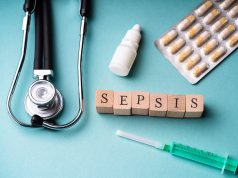Diphenhydramine, tramadol, bupropion, and synthetic cannabinoids were linked to increases
By Lori Solomon HealthDay Reporter
FRIDAY, Oct. 18, 2024 (HealthDay News) — Seizures associated with pediatric single-substance exposures are steadily increasing, according to a study presented at the European Emergency Medicine Congress, held from Oct. 12 to 16 in Copenhagen, Denmark.
Rita Farah, Ph.D., from the University of Virginia in Charlottesville, and colleagues assessed characteristics of 30,985 pediatric single-substance exposures that resulted in seizures in patients younger than 20 years using data reported to the U.S. National Poison Data System (2009 through 2023).
The researchers found that the number of exposures with seizures increased from 1,418 cases in 2009 to 2,749 cases in 2023, with an average of a 5 percent yearly increase. The number of exposures with seizure doubled during the study period in patients aged 6 to 12 years and 13 to 19 years, with a 6 percent yearly increase.
The increase in exposures with seizures was in part driven by diphenhydramine-related exposures, which increased from 85 cases in 2009 to 404 cases in 2023. Bupropion-related exposures increased from 162 in 2013 to 431 in 2023. The two most frequently reported substance exposures with seizure between 2009 and 2012 were tramadol and diphenhydramine, but from 2013 to 2023, bupropion and diphenhydramine were the first and second most frequently reported substances. From 2012 to 2015, synthetic cannabinoids ranked third. For status epilepticus, bupropion, diphenhydramine, synthetic cannabinoids, and amphetamines were the most frequently reported substances.
“Preventative measures need to be instituted to prevent a further rise,” the authors wrote.
Copyright © 2024 HealthDay. All rights reserved.



















